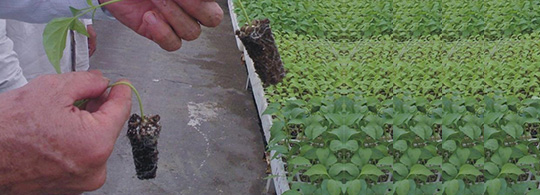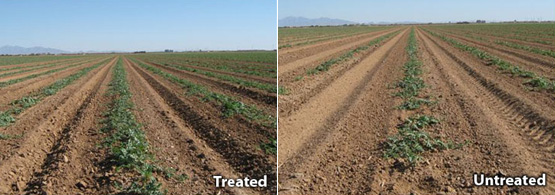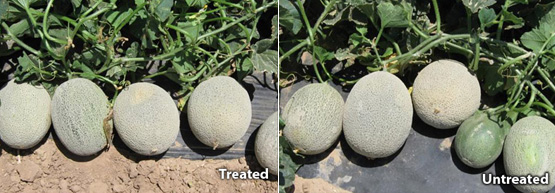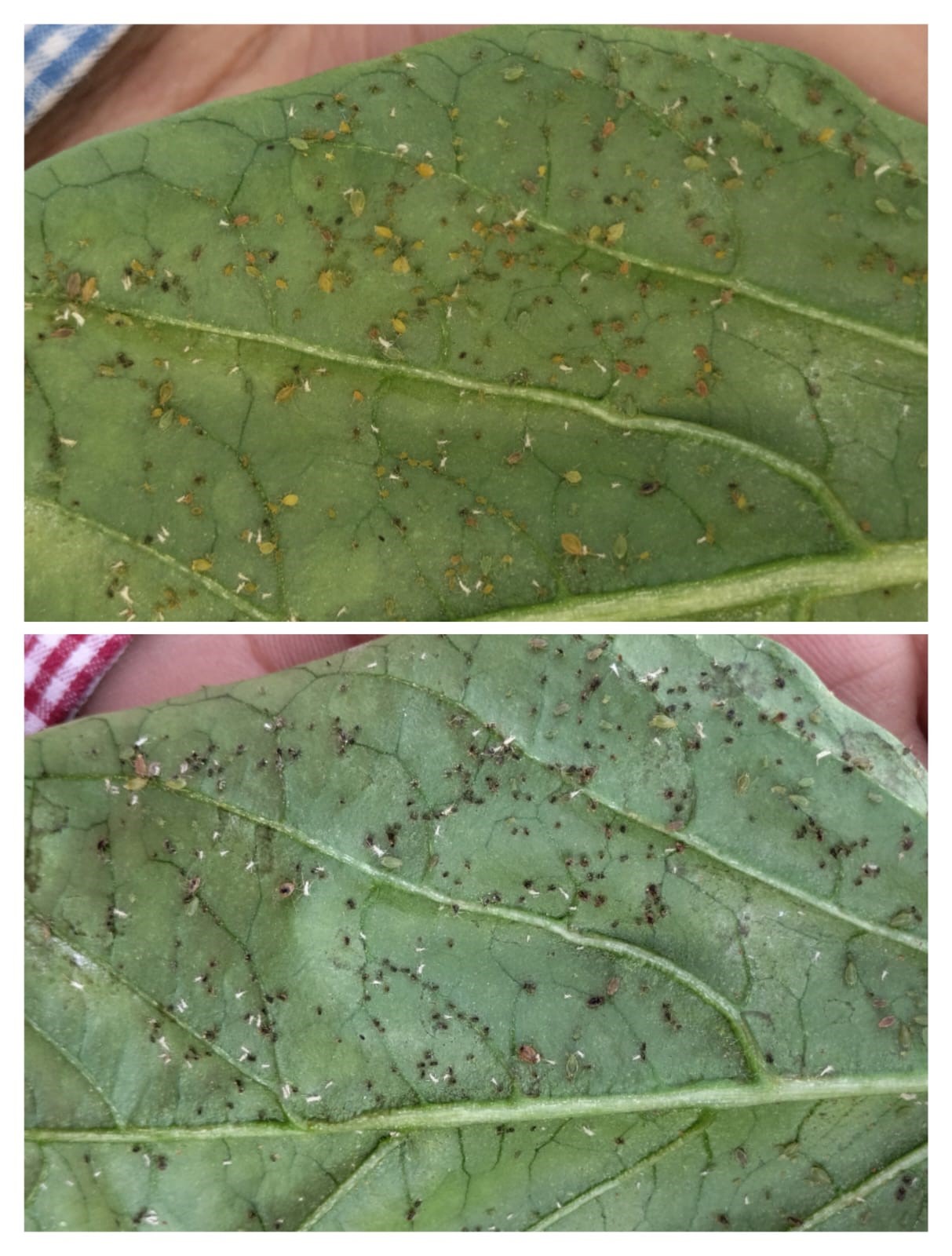Ferticell Organic Insecticide
Is an exclusive organic product for THRIPS and APHIDS, today most of the sucking pests are resistant to synthetic insecticides, whereas they can not develop resistance to organic molecules. The product is eco-friendly and does not cause harm to natural enemy complex in the eco system. The product works by dissolving the wax and dehydrating the insect, which dries up in a few days.
Crops: Thrips and Aphids occur on all crops, vegetables, and ornamental plants.
Dosage: 3-5 ml/Liter
AGROPLASMA ORGANIC Insecticide delivers the following advantages in plants:
• Very effective on THRIPS and APHIDS.
• Increases plant SAR (Systemic Acquired Resistance).
• Can be sprayed on the soil at the Soil Preparation Stage to control soil insects.
• Suitable for all stages from nursery to harvesting.
• Does not carry any residue in the harvest.
Sucking pests pierce plants with slender, sharp-pointed mouthparts and suck the plant sap. Withdrawal of the sap results in minute white, brown, or red spotting on the leaves, fruits, or stems of the plant. It may also cause curling leaves, deformed fruit, and general wilting, browning, and drying of the entire plant. Some of these pests are important VIRUS VECTOR, transmitting a range of plant viruses. Virus-infected plants can not be cured. With AGROPLASMA ORGANIC Insecticide you can control these pests by preventing or reducing disease levels in crops by eliminating or avoiding sources of virus infection and minimizing the spread by these sucking pests.
Imagen: One day after application (aphis control).
APPLICABILITY
It can be used on grain crops, vegetables, fruit crops, Lawns, turf, floriculture, And ornamental plants. Can be applied in combination with other pesticides and other organic products for foliar spray as well as soil application.
DOSAGES
For all crops 3ml to 5ml per lit of water according to crop development stage and insect attacks. Can be applied from nursery to harvesting. Soil application through drip irrigation, fertigation system, or manual drenching.
GENERAL CONDITIONS
Apply in normal spraying according to crops and pests, specifying on the label the indications related to the addition of co-adjuvants or pH correctors. Apply early in the morning or at dusk, from the first stages of development of the pest, repeating if necessary, after 7 days for severe infestations and 10 days for light infestations. Apply outdoors by spraying with a tractor, manually with a lance and/or spray gun, or with a knapsack. Apply in greenhouses by manual spraying with lance and/or spray gun or knapsack. During the application of the product, the operator should avoid contact with wet foliage.
Use under technical advice.
WARNING & TOXICITIES
KEEP OUT OF REACH OF CHILDREN. We recommend good safety practices when using any pesticide, such as avoiding contact with eyes and skin and keeping it out of the reach of children. Wear gloves and eye protection when using the product. May be harmful if swallowed. If the product gets in the eyes, flush with water. If on the skin, wash with soap and water. If irritation persists, contact a physician. This product poses minimal risk to wildlife, fish, and aquatic organisms. Avoid direct contact with bodies of water.
STORAGE AND DISPOSAL
Do not contaminate water, food, or feed by storage or disposal.
PESTICIDE STORAGE
Store AGROPLASMA ORGANIC Insecticide ins in a cool place out of direct sunlight. Do not freeze.
PESTICIDE DISPOSAL
Wastes resulting from the use of this product may be disposed of on-site or at an approved waste disposal facility.
CONTAINER HANDLING [for containers less than 5 gallons/ 19 liters]:
Non-refillable container. Do not reuse or refill this container. Triple rinse (or equivalent) container promptly after emptying, then offer for recycling, if available, or reconditioning, if appropriate, or puncture and dispose of in a sanitary landfill, or, if allowed by state and local authorities, by incineration. If burned, stay out of smoke. Triple rinse as follows: Empty the remaining contents into application equipment or a mix tank and drain for 10 seconds after the flow begins to drip. Fill the container ¼ full with water and recap. Shake for 10 seconds. Pour rinse into application equipment or a mix tank or store rinse for later use or disposal. Drain for 10 seconds after the flow begins to drip. Repeat this procedure two more times. Then offer for recycling, if available, or puncture or dispose of in a sanitary landfill, or by incineration. Do not burn unless allowed by state and local ordinances.
CONTAINER HANDLING [for containers greater than 5 gallons/ 19 LITRES]:
Non-refillable container. Do not reuse or refill this container. Triple rinse (or equivalent) promptly after emptying. Triple rinse as follows:
Empty the remaining contents into the application equipment or a mix tank. Fill the container ¼ full with water. Replace and tighten closures. Tip the container on its side and roll it back and forth, ensuring at least one complete revolution, for 30 seconds. Stand the container on its end and tip it back and forth several times. Empty the rinse into application equipment or a mix tank or store the rinse for later use or disposal. Repeat this procedure two more times. Then offer for recycling, if available, or puncture or dispose of in a sanitary landfill, or by incineration. Do not burn unless allowed by state and local ordinances.
FIRST AID
In case of contact with the eyes:
– Hold eyes open and rinse slowly and gently with water for 15-20 minutes.
– Remove contact lenses, if present, after the first 5 minutes and continue rinsing.
– Call a poison control center or doctor for treatment advice.
In the case of skin or clothing contact:
– Remove contaminated clothing.
– Rinse skin immediately with plenty of water for 15-20 minutes.
– Wash the exposed area with soap and water. If irritation persists, seek medical attention.
– Call a poison control center or doctor for treatment advice.
PRECAUTIONARY STATEMENTS
HAZARDS TO HUMANS AND DOMESTIC ANIMALS WARNING:
Causes substantial but temporary eye injury. Do not get in the eyes or on clothing.
Avoid contact with skin and clothing. Wear protective eyewear such as goggles, face shields, or safety glasses. Wash thoroughly with soap and water after handling and before eating, drinking, chewing gum, using tobacco, or using the toilet. Remove and wash contaminated clothing before reuse.
PERSONAL PROTECTIVE EQUIPMENT (PPE)
Some materials that are chemical-resistant to this product are listed below.
Applicators and other handlers must wear:
• Protective eyewear
• Coveralls are worn over a short-sleeved shirt and short pants
• Shoes plus socks
• Chemical-resistant gloves such as barrier laminate, butyl rubber, nitrile rubber, neoprene rubber, polyvinyl chloride, or Viton
Follow the manufacturer’s instructions for cleaning/maintaining PPE. If no such instructions for washables, use detergent and hot water. Keep and wash PPE items separately from other laundry.
USER SAFETY RECOMMENDATIONS:
Users should:
• Wash hands before eating, drinking, chewing gum, using tobacco, or using the toilet.
• Remove clothing immediately if the product gets inside. Wash thoroughly and put on clean clothing.
• Remove PPE after handling this product.
• Wash the outside of the gloves before removing them. As soon as possible, wash thoroughly and change into clean clothes.
ENVIRONMENTAL HAZARDS
For terrestrial uses: Do not apply directly to water, to areas where surface water is present, or to intertidal areas below the mean high-water mark. Do not contaminate water when disposing of equipment wash water or rinse.
Do not apply this product or allow it to drift to blooming crops or weeds while honey bees are actively foraging in the treatment area. For maximum honeybee protection, avoid early morning and late afternoon applications.
GALLERY















